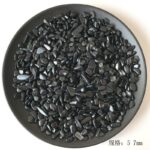Introduction
Silver crystalline, a unique material with captivating properties, has garnered significant attention in various industries for its exceptional electrical, thermal, and antibacterial characteristics. This article delves into the multifaceted applications of silver crystalline, exploring its potential in domains ranging from electronics to medicine and beyond.

Properties of Silver Crystalline
Silver crystalline possesses an array of remarkable properties that contribute to its widespread use:
-
High electrical conductivity: Silver is an excellent conductor of electricity, with a high conductivity of 63.0 × 10^6 S/m. This property makes silver crystalline ideal for electrical applications, such as conductors and connectors.
-
Exceptional thermal conductivity: Silver also exhibits exceptional thermal conductivity of 429 W/mK, making it suitable for heat transfer applications. This property enables silver crystalline to dissipate heat efficiently, which is crucial in electronic devices and heat exchangers.
-
Antibacterial properties: Silver has been recognized for its antimicrobial properties for centuries. Silver crystalline inhibits the growth of bacteria and other microorganisms, making it a valuable material for medical applications, particularly in wound dressings and antibacterial surfaces.
Applications of Silver Crystalline
The unique properties of silver crystalline have led to its adoption in a diverse range of applications:
Electronics
- Electrical conductors
- Connectors
- Heat sinks
- Printed circuit boards
Medicine
- Wound dressings
- Antibacterial surfaces
- Surgical instruments
- Dental implants
Industrial
- Catalysts
- Sensors
- Energy storage
- Water purification
Other
- Jewelry
- Decorative surfaces
- Automotive components
- Aerospace applications
Silver Crystalline in Emerging Technologies
The remarkable properties of silver crystalline continue to inspire the development of innovative applications. Researchers are actively exploring its potential in emerging technologies:
-
Flexible electronics: Silver crystalline’s flexibility and conductivity make it a promising material for wearable devices and flexible electronic circuits.
-
Bioelectronics: The antibacterial and biocompatible properties of silver crystalline present opportunities for advancements in medical devices and implantable electronics.
-
Renewable energy: Silver crystalline’s high electrical and thermal conductivity make it a viable candidate for solar cells and thermoelectric devices.
Market and Industry Trends
The global silver crystalline market is projected to experience significant growth over the next decade. According to a report by Allied Market Research, the market is expected to reach $2.5 billion by 2031, growing at a CAGR of 7.2% from 2022 to 2031.
The increasing demand for silver crystalline is attributed to its widespread use in electronics, healthcare, and other industries. The growing awareness of its antibacterial properties has also contributed to the increasing adoption of silver crystalline in medical applications.
Customer Needs and Wants
Customers seeking silver crystalline solutions prioritize several key factors:
-
High quality: Customers require silver crystalline with consistent properties to ensure reliability and performance in their applications.
-
Customization: Many customers have specific requirements for the shape, size, and properties of silver crystalline, necessitating tailored solutions.
-
Cost-effectiveness: While silver is a relatively expensive material, customers seek cost-effective options without compromising quality.
Pros and Cons of Silver Crystalline
Pros:
- Excellent electrical and thermal conductivity
- Antibacterial properties
- Versatility in applications
- Durable and long-lasting
Cons:
- Relatively high cost
- Limited availability in certain forms
- Can tarnish over time
Frequently Asked Questions
- What is the difference between silver crystalline and silver nanoparticles?
Silver crystalline is a solid material with an ordered atomic structure, while silver nanoparticles are extremely small particles of silver that exhibit different properties.
- Is silver crystalline safe for use in medical applications?
Silver crystalline has been used in medical applications for centuries and is generally considered safe. However, it is important to consult with healthcare professionals for specific recommendations.
- How can I choose the right silver crystalline solution for my application?
Consider the specific requirements of your application in terms of shape, size, properties, and cost. Seek advice from manufacturers or suppliers who can provide tailored solutions.
- How do I ensure the quality and reliability of silver crystalline?
Source silver crystalline from reputable suppliers who can provide certifications of purity, conductivity, and other relevant properties.
- What are the potential hazards of working with silver crystalline?
Silver crystalline dust and fumes can be irritating to the skin and respiratory tract. Wear appropriate protective gear when handling silver crystalline.
- How do I dispose of silver crystalline waste properly?
Dispose of silver crystalline waste in accordance with local regulations and guidelines. Consult with waste management professionals for proper disposal methods.




























